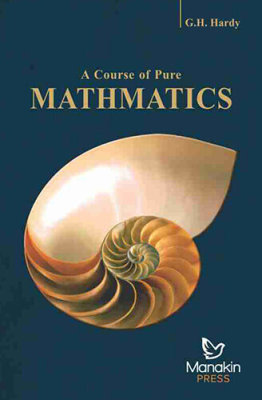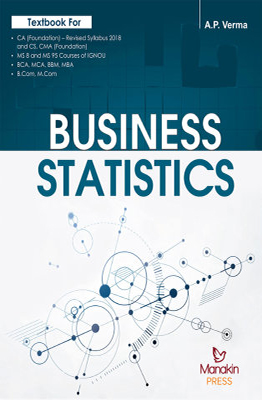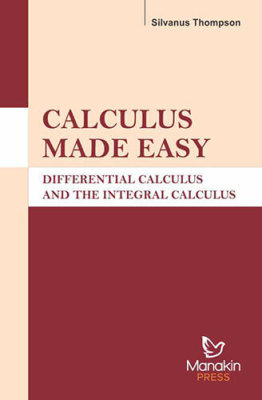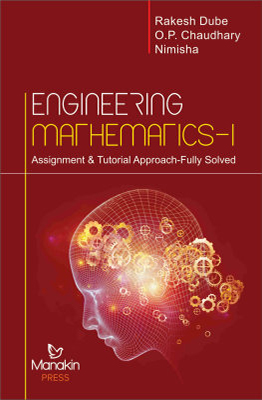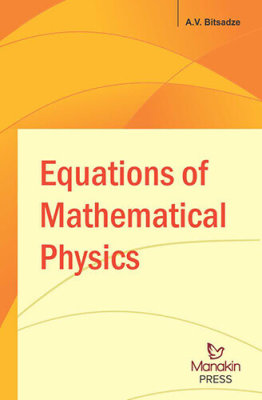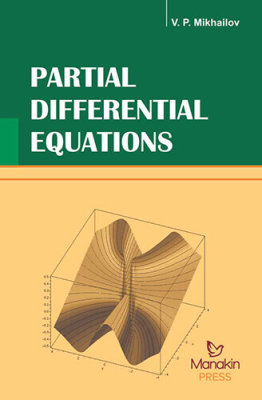G.H. Hardy | Category: MathematicsBook Details
ISBN: 9789386677334
YOP: 2018
Pages: 587
Order also on
G.H. Hardy’s text is a good single volume refresher course for work in analysis and more advanced algebra, including number theory. Not quite as modern as Birkhoff and MacLane’s text, or Manes’ work, this volume forms the underpinnings of both works. If you have a good understanding of the preliminary work required in algebra and geometry, Hardy can be read directly and with pleasure. If you have a desire to understand the basis of what is presented in most first-year calculus texts, then Hardy’s text is for you.
The book contains a large number of descriptive and study materials together with a number of difficult problems with regards to number theory analysis. The book is organized into the following chapters, with each chapter further divided.
1. Real variables
2. Functions of real variables
3 complex numbers
4. limits of functions of a positive integral variable
5. limits of functions of a continuous variable. Continuous and discontinuous functions
6. derivatives and integrals
7. additional theorems in the differential and integral calculus
8. the convergence of infinite series and infinite integrals
9. the logarithmic, exponential and circular functions of a real variable
10. the general theory of the logarithmic, exponential and circular functions
1–2. Rational numbers
3–7. Irrational numbers
8. Real numbers
9. Relations of magnitude between real numbers
10–11. Algebraical operations with real numbers
12. The number
13–14. Quadratic surds
15. The continuum
16. The continuous real variable
17. Sections of the real numbers. Dedekind’s Theorem
18. Points of condensation
19. Weierstrass’s Theorem
Miscellaneous Examples
20. The idea of a function
21. The graphical representation of functions. Coordinates
22. Polar coordinates
23. Polynomials
24–25. Rational functions
26–27. Algebraical functions
28–29. Transcendental functions
30. Graphical solution of equations
31. Functions of two variables and their graphical representation
32. Curves in a plane
33. Loci in space
34–38. Displacements
39–42. Complex numbers
43. The quadratic equation with real coefficients
44. Argand’s diagram
45. De Moivre’s Theorem
46. Rational functions of a complex variable
47–49. Roots of complex numbers
Miscellaneous Examples
50. Functions of a positive integral variable
51. Interpolation
52. Finite and infinite classes
53–57. Properties possessed by a function of n for large values of n
58–61. Definition of a limit and other definitions
62. Oscillating functions
63–68. General theorems concerning limits
69–70. Steadily increasing or decreasing functions
71. Alternative proof of Weierstrass’s Theorem
72. The limit of xn
73. The limit of_1 +1n_n
74. Some algebraical lemmas
75. The limit of n( n√x − 1)
76–77. Infinite series
78. The infinite geometrical series
79. The representation of functions of a continuous real variable by means of limits
80. The bounds of a bounded aggregate
81. The bounds of a bounded function
82. The limits of indetermination of a bounded function
83–84. The general principle of convergence
85–86. Limits of complex functions and series of complex terms
87–88. Applications to zn and the geometrical series
Miscellaneous Examples
89–92. Limits as x→∞ or x→−∞
93–97. Limits as x → a
98–99. Continuous functions of a real variable
100–104. Properties of continuous functions. Bounded functions. The oscillation of a function in an interval
105–106. Sets of intervals on a line. The Heine-Borel Theorem
107. Continuous functions of several variables
108–109. Implicit and inverse functions
Miscellaneous Examples
110–112. Derivatives
113. General rules for differentiation
114. Derivatives of complex functions
115. The notation of the differential calculus
116. Differentiation of polynomials
117. Differentiation of rational functions
118. Differentiation of algebraically functions
119. Differentiation of transcendental functions
120. Repeated differentiation
121. General theorems concerning derivatives. Rolle’s Theorem
122–124. Maxima and minima
125–126. The Mean Value Theorem
127–128. Integration. The logarithmic function
129. Integration of polynomials
130–131. Integration of rational functions
CONTENTS xi
SECT. PAGE
132–139. Integration of algebraical functions. Integration by rationalization. Integration by parts
140–144. Integration of transcendental functions
145. Areas of plane curves
146. Lengths of plane curves
Miscellaneous Examples
147. Taylor’s Theorem
148. Taylor’s Series
149. Applications of Taylor’s Theorem to maxima and minima
150. Applications of Taylor’s Theorem to the calculation of limits
151. The contact of plane curves
152–154. Differentiation of functions of several variables
155. Differentials
156–161. Definite Integrals. Areas of curves
162. Alternative proof of Taylor’s Theorem
163. Application to the binomial series
164. Integrals of complex functions
Miscellaneous Examples
165–168. Series of positive terms. Cauchy’s and d’Alembert’s tests of convergence
169. Dirichlet’s Theorem
170. Multiplication of series of positive terms
171–174. Further tests of convergence. Abel’s Theorem. Maclaurin’s integral
test
175. The series
176. Cauchy’s condensation test
177–182. Infinite integrals
183. Series of positive and negative terms
184–185. Absolutely convergent series
186–187. Conditionally convergent series
188. Alternating series
189. Abel’s and Dirichlet’s tests of convergence
190. Series of complex terms
191–194. Power series
195. Multiplication of series in general
Miscellaneous Examples
196–197. The logarithmic function
198. The functional equation satisfied by log x
199–201. The behaviour of log x as x tends to infinity or to zero
202. The logarithmic scale of infinity
203. The number e
204–206. The exponential function
207. The general power ax
208. The exponential limit
209. The logarithmic limit
210. Common logarithms
211. Logarithmic tests of convergence
212. The exponential series
213. The logarithmic series
214. The series for arc tan x
215. The binomial series
216. Alternative development of the theory
Miscellaneous Examples
217–218. Functions of a complex variable
219. Curvilinear integrals
220. Definition of the logarithmic function
221. The values of the logarithmic function
222–224. The exponential function
225–226. The general power az
227–230. The trigonometrical and hyperbolic functions
231. The connection between the logarithmic and inverse trigonometrical functions
232. The exponential series
233. The series for cos z and sin z
234–235. The logarithmic series
236. The exponential limit
237. The binomial series
Miscellaneous Example
G.H. Hardy’s text is a good single volume refresher course for work in analysis and more advanced algebra, including number theory. Not quite as modern as Birkhoff and MacLane’s text, or Manes’ work, this volume forms the underpinnings of both works. If you have a good understanding of the preliminary work required in algebra and geometry, Hardy can be read directly and with pleasure. If you have a desire to understand the basis of what is presented in most first-year calculus texts, then Hardy’s text is for you.
The book contains a large number of descriptive and study materials together with a number of difficult problems with regards to number theory analysis. The book is organized into the following chapters, with each chapter further divided.
1. Real variables
2. Functions of real variables
3 complex numbers
4. limits of functions of a positive integral variable
5. limits of functions of a continuous variable. Continuous and discontinuous functions
6. derivatives and integrals
7. additional theorems in the differential and integral calculus
8. the convergence of infinite series and infinite integrals
9. the logarithmic, exponential and circular functions of a real variable
10. the general theory of the logarithmic, exponential and circular functions
Your content goes here. Edit or remove this text inline or in the module Content settings. You can also style every aspect of this content in the module Design settings and even apply custom CSS to this text in the module Advanced settings.
| Weight | 0.701 kg |
|---|---|
| Dimensions | 21.6 × 14 × 2.8 cm |
| yop |
2018 |
| subject-category |
Mathematics |
| isbn |
9789386677334 |

